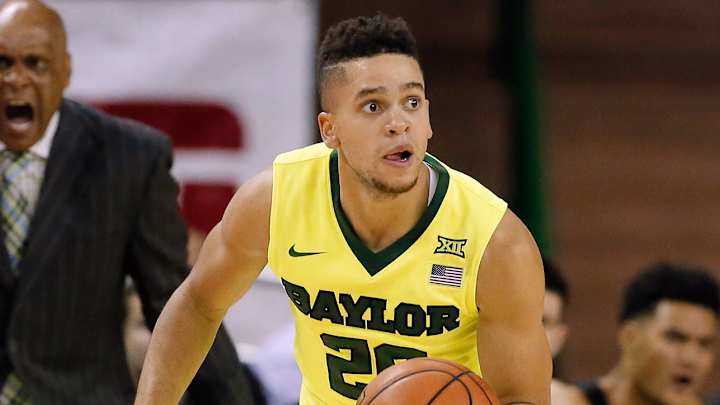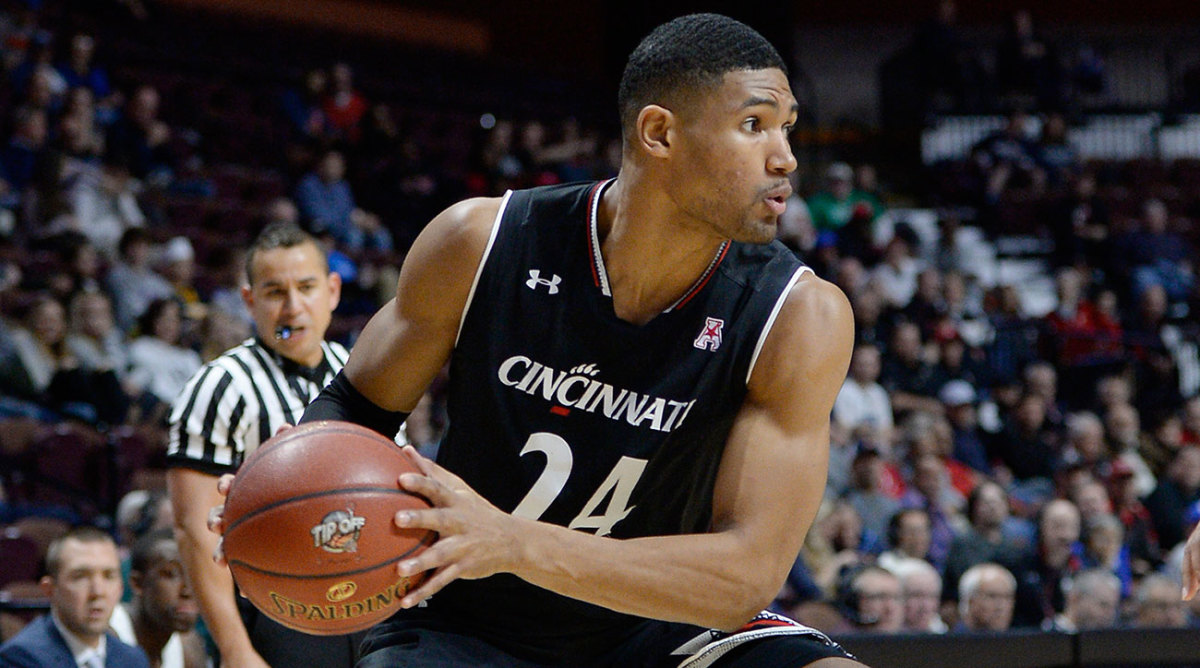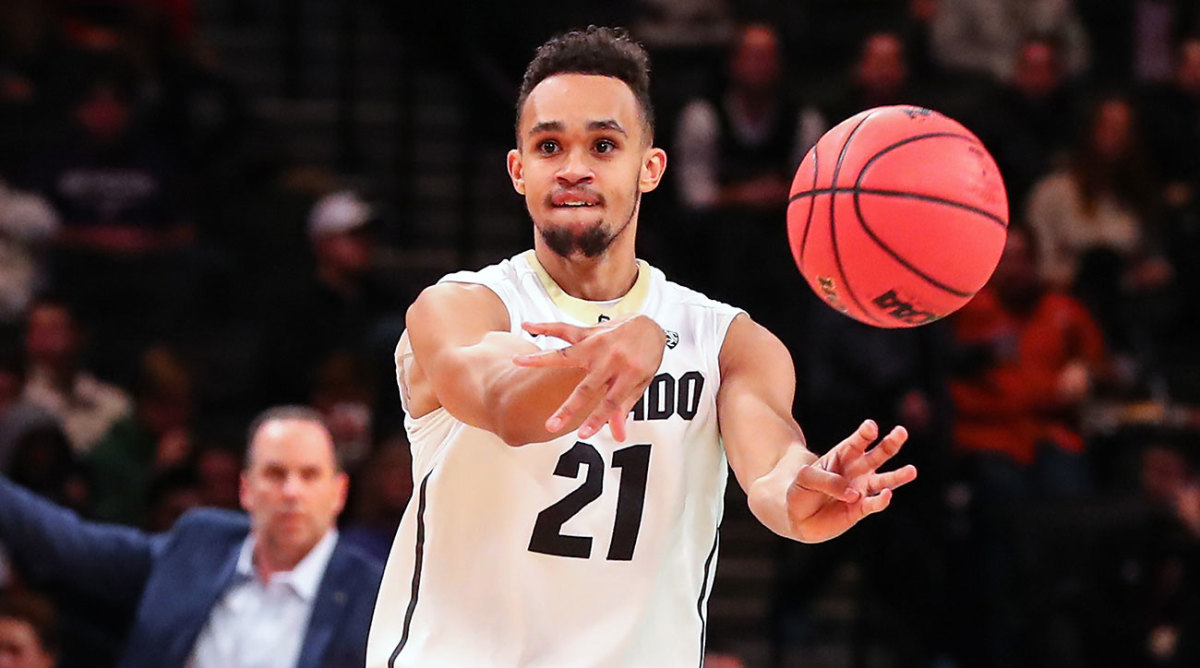Early returns: The actual impact transfers for 2016–17

There’s a point in each season, usually in early December, where the widely held beliefs that guided preview watch lists—for national player of the year, impact transfers, impact freshmen, etc.—become irrelevant in the face of conflicting on-court results. And sometimes life comes at us even faster, such as in the case of Virginia’s Austin Nichols, who either headlined or co-headlined every impact-transfer story I read this off-season.
Nichols, a former five-star prospect whose career began at Memphis, was expected to start at center for a top-10 Cavaliers team and be an All-ACC pick. SI projected him to be Virginia’s leading scorer and have immense defensive value. But Nichols was suspended for Virginia’s first three games of 2016-17—two exhibitions and the opener—and then after playing 16 minutes off the bench in Game 2, he was perma-booted from the program for what it called yet another “violation of team rules.” He will make no further impact this season—and even at this early juncture, it seems worthwhile to reassess who truly looks like an impact transfer.
Of the major-conference players who fall under the definition of traditional, non-graduate transfers—i.e., they sat out all of 2015–16 after switching schools—here are the stories of three who debuted with less hype than Nichols did, but have taken the reins of potential NCAA tournament offenses:
Manu Lecomte, PG, Jr., Baylor
Averages (through three games): 16.7 points, 7.0 assists
Averages in two seasons at Miami: 7.8 points, 2.0 assists
The sit-out-a-season restriction on Division I transfers can seem draconian even to American hoops fans, but try rationalizing it to Europeans—which is what Lecomte, a former high-scoring guard from Belgium’s junior-national programs, had to do after he chose to leave Miami in 2015. “People back home—friends, former teammates, even coaches—did not understand my decision,” he said. “They were like, ‘You’re not going to play for a whole year? Just come back and play for a [professional] club in Europe instead.’ I told them, ‘You’re right, it seems crazy, but it’s going to be worth it.’”
• Hoop Thoughts: Tom Crean is comfortable & IU is cruising
Lecomte’s explanation was, in fact, reasonable: He played point guard in his freshman year with the Hurricanes, in 2013–14, but was shifted more off the ball once talented Kansas State transfer Angel Rodriguez arrived the following season. Lecomte considered his pro future—“I felt like if I wanted a shot at the NBA, I needed to be a point guard”—so he decided to look for a place where that could happen. Lecomte had been uncertain if NCAA tournament-level teams would come calling with point-guard offers, but the day after he obtained his transfer release from Miami in April 2015, Baylor assistant Grant McCasland flew to Miami to pitch Lecomte on becoming Lester Medford’s successor at the point-guard spot in ‘16–17.
The transfer is looking like it was worth it. Lecomte is averaging 35.7 minutes per game as the 3–0 Bears’ starting point guard. He keyed a Nov. 15 win over Oregon with 18 points and seven assists, and his early efficiency has been remarkable, as he has 21 assists against just five turnovers, and is shooting 58.3% on twos and 44.4% on threes. If those numbers don’t slide too much, he could become Baylor’s best point guard since Pierre Jackson, who helped lead the team to an Elite Eight as a junior in 2011–12.

Kyle Washington, PF, Jr., Cincinnati
Averages (through four games): 17.0 points, 9.5 rebounds
Averages in two seasons at NC State: 5.8 points, 4.0 rebounds
When Washington, a former top-100 recruit out of Minnesota, decided to leave NC State—where he was only an occasional starter—following its Sweet 16 season of 2014–15, he had plenty of options. It was promising that he chose a program that figured to address his weaknesses as much (or more) than it would highlight his strengths. On Washington’s transfer-recruiting visit to Cincinnati, coach Mick Cronin told him, “I know what you can do”—running through Synergy Sports clips he liked of Washington’s offensive skills, both in the post and attacking bigs off the bounce from the perimeter—before telling Washington that he had serious work to do in the areas of defensive awareness, making winning plays, as opposed to merely hunting buckets.
Pac-12, SEC surprisingly surge in 2017 recruiting rankings
When Washington returned home to Minnesota after the visit, he told his father, “I want to go to Cincinnati, but I also think I have to go to Cincinnati, because they can give me what I need to become a complete player.” Washington acknowledges that his defense was lacking at NC State, but he also had a different view of what his ceiling was—Washington believing that he could carve out a full-time, high-minute, starting gig—than did coach Mark Gottfried. “I believed that I had to make a change,” Washington says, “to save my career.”
At Cincinnati, Washington has carved out the role he envisioned—he starts at power forward, averages 29.0 minutes per game, takes a team-high 29.7% of the Bearcats’ shots, and grabs a team-high 29.8% of available defensive boards. Washington still has plenty of room for defensive improvement, but he’s making big contributions on the glass, and he’s giving Cincy an offensive dimension that it’s lacked in its recent frontcourts, by showing the dual ability to score in the post and stretch the floor. He’s been a big reason why the Bearcats—and not UConn or SMU—look like the AAC’s best team thus far.

Derrick White, PG/SG, Sr., Colorado
Averages (through four games): 14.0 points, 4.8 assists, 4.0 rebounds
Average in junior year at UC–Colorado Springs: 25.8 points, 7.4 rebounds, 5.2 assists
The degree to which White was ignored coming out of high school in Parker, Colo., is fairly stunning. He was a 6' 1", 160-pound guard at the outset of his senior year, and the only offers he had were from Gillette (junior) College in Wyoming, and the one he took, from Division II University of Colorado–Colorado Springs. “They can give you a full ride, but they didn’t offer me one at the start,” White says. “I got $3,000 [out of approximately $10,000 tuition and board], so I was paying a lot of my own way as a freshman, and I got a full ride after that.”
Scouting the Champions Classic: The freshman progress report
He earned it by growing into a 6' 5", D-II All-American averaging a Denzel Valentine-esque 25.8 points, 7.4 rebounds and 5.2 assists in his junior season—after which he says he decided it was time “to try to make a childhood dream come true.” That meant making the rare jump to D-I and playing for Colorado, the college team he’d rooted for as a kid. While White redshirted last season in Boulder, he was routinely the Buffaloes’ best backcourt player in practice, as well as the guy they’d use on scout team to imitate opposing stars such as Jaylen Brown (of Cal) or Dillon Brooks (of Oregon).
And when White was finally unleashed this season, it was clear that his talent does translate to D-I. The initial plan was to start him at the two, but due to an injury to presumed starting point guard Dominique Collier, White has been serving as Colorado’s lead guard, flashing slippery-smooth drive-to-score skills and making quality decisions. In Monday’s loss to Notre Dame in the Legends Classic in Brooklyn, White had 20 points, nine assists, five rebounds and two blocks. The game was played in the Barclays Center, home of the NBA’s Nets, which can seat 17,732 people. The final game of White’s D-II career, in March 2015, came in a 3,000-seat venue called Wisdom Gym in Stephenville, Texas—population 17,123. White, perhaps more than any other transfer debuting this season, has upgraded his situation.
